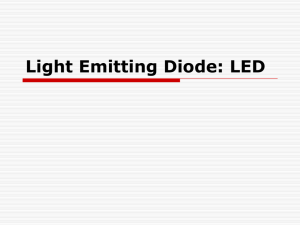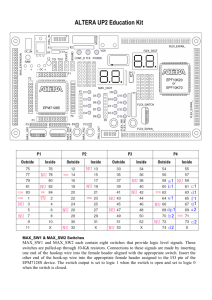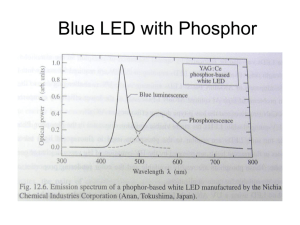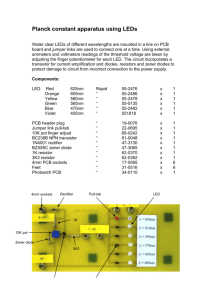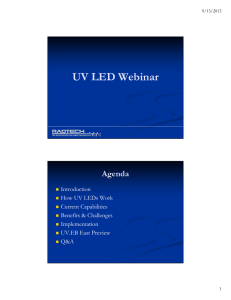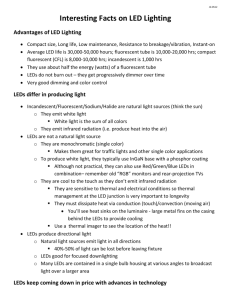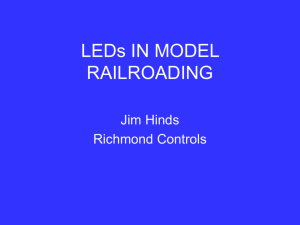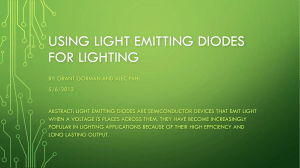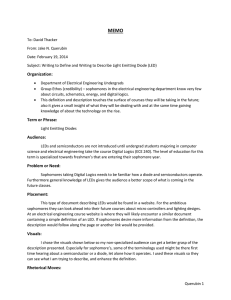cyklus Innovation Lectures (INNOLEC)
advertisement
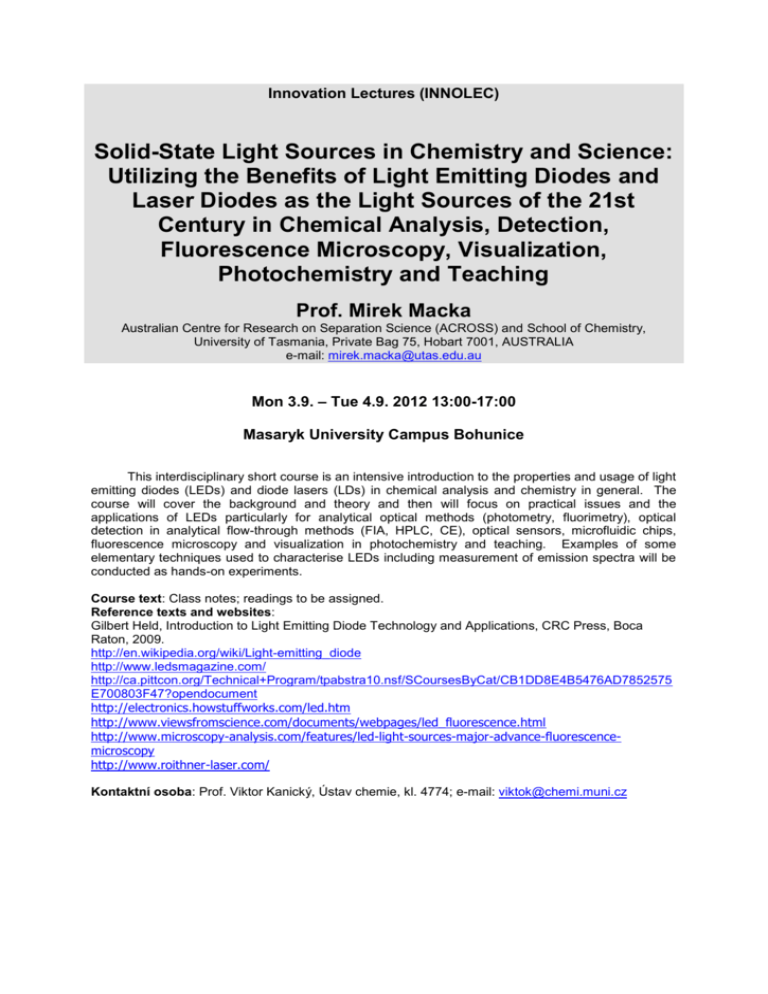
Innovation Lectures (INNOLEC) Solid-State Light Sources in Chemistry and Science: Utilizing the Benefits of Light Emitting Diodes and Laser Diodes as the Light Sources of the 21st Century in Chemical Analysis, Detection, Fluorescence Microscopy, Visualization, Photochemistry and Teaching Prof. Mirek Macka Australian Centre for Research on Separation Science (ACROSS) and School of Chemistry, University of Tasmania, Private Bag 75, Hobart 7001, AUSTRALIA e-mail: mirek.macka@utas.edu.au Mon 3.9. – Tue 4.9. 2012 13:00-17:00 Masaryk University Campus Bohunice This interdisciplinary short course is an intensive introduction to the properties and usage of light emitting diodes (LEDs) and diode lasers (LDs) in chemical analysis and chemistry in general. The course will cover the background and theory and then will focus on practical issues and the applications of LEDs particularly for analytical optical methods (photometry, fluorimetry), optical detection in analytical flow-through methods (FIA, HPLC, CE), optical sensors, microfluidic chips, fluorescence microscopy and visualization in photochemistry and teaching. Examples of some elementary techniques used to characterise LEDs including measurement of emission spectra will be conducted as hands-on experiments. Course text: Class notes; readings to be assigned. Reference texts and websites: Gilbert Held, Introduction to Light Emitting Diode Technology and Applications, CRC Press, Boca Raton, 2009. http://en.wikipedia.org/wiki/Light-emitting_diode http://www.ledsmagazine.com/ http://ca.pittcon.org/Technical+Program/tpabstra10.nsf/SCoursesByCat/CB1DD8E4B5476AD7852575 E700803F47?opendocument http://electronics.howstuffworks.com/led.htm http://www.viewsfromscience.com/documents/webpages/led_fluorescence.html http://www.microscopy-analysis.com/features/led-light-sources-major-advance-fluorescencemicroscopy http://www.roithner-laser.com/ Kontaktní osoba: Prof. Viktor Kanický, Ústav chemie, kl. 4774; e-mail: viktok@chemi.muni.cz Syllabus Lectures 1 and 2 Why use LEDs in chemistry and science? History Fundamentals (physical principles, construction) Basics of LEDs in respect to their applications in analysis and chemistry Application areas Considerations in choosing a LED Practical issues when using LEDs Coupling of LEDs with optical fibers Pulsed techniques: use of lock-in amplifiers and LEDs in TRF (time resolved fluorescence) Optical methods in chemical analysis with an emphasis on photometry and photometric detection, fluorimetry and optical detection methods in microfluidic chips Basics of construction of simple LED-based photometers and fluorimeters Fluorescence microscopy and visualization using a set-up for <@250 Diode lasers for compact inexpensive LIF (Laser Induced Fluorescence) detection in on capillary and microfluidic chip formats LEDs as light sources for photochemistry Other advanced and specialized methods Outline of hands-on experiments: measuring emission spectra, optical power, intensity, transmittance, absorbance, pulsing LEDs and use of lock-in amplifier techniques Workshop on examples from participants’ own specific usage, questions, discussion Workshop using examples incl. particular applications of course participants Consultations

